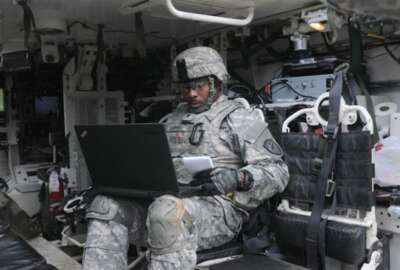
Army using COTS software to improve its flows of paper, tasks through headquarters units
The Army says its new Task Management Tool has significantly sped up the paperwork process within the Pentagon, other Army headquarters organizations.
To listen to On DoD on your phone or mobile device, subscribe on PodcastOne or Apple Podcasts. The best listening experience on desktop can be found using Chrome, Firefox or Safari.
Each of the military services have been under orders from Congress to make their headquarters operations leaner and more efficient for several years now. The Army has found a way to achieve at least part of that objective, using modern IT to track its processes for moving paper and tasks throughout the Pentagon and other headquarters activities.
The Task Management Tool (TMT), a suite of commercial off-the-shelf software products which the Army implemented within its headquarters last year, has cut the average time it takes to complete a “task” directed by senior leaders by two weeks. And it has reduced the number of tasks that miss their assigned deadlines by one-third.
“[Headquarters, Department of the Army] had a legacy system that allowed it to send taskers out, but it had no way of keeping visibility on who had the task or how long a task was out there,” Gus Burnside, the deputy product lead for Army Enterprise Staff Management Systems (AESMS), part of the Program Executive Office for Enterprise Information Systems said in an interview for Federal News Radio’s On DoD. “What TMT brings to the table is a fully automated system that allows the tasker to be tracked from cradle to grave, thus giving the leadership full transparency as to who some of the hold-ups are or who are some of the folks that are getting their taskers done on time.”
The added level of visibility the toolset brings to the Army’s day-to-day headquarters operations might eventually let managers better understand who has too many tasks on their plate and who does not, enabling a redistribution of workloads.
Tracking tasks makes accountability easier
For now, AESMS is focused on maturing TMT to the point that it can become an official Army program of record and serve as an enterprise-wide capability for all of the Army’s headquarters organizations. So far, it has been implemented at HQDA, U.S. Forces Korea, Army Reserve Command and Army Forces Command.
In the case of the latter three, commanders have opted to use their own funds to implement TMT under a software-as-a-service model, with the application itself hosted at ALTESS, the Army’s internal cloud-like data facility in Radford, Virginia.
At U.S. Forces Korea, adopting the system has cut task management costs by $2.2 million and boosted staff productivity by 25 percent, the Army says.
Those gains arose, in large part, from the fact that senior leaders within those commands can now pinpoint exactly where a task has stopped moving through the system, and who’s accountable for it, said Lt. Col. Toy Frasier, the product lead for AESMS.
“Normally, you send a tasker out and it can get lost somewhere out there,” he said. “But the TMT tool gives you a day and time when the task needs to be completed, it gives ownership to a group, and it allows the tasker to be tracked through the process.”
Frasier said that with the new system, senior leaders who send tasks receive an automatic tracking mechanism once workers receive and open a task.
Copyright © 2025 Federal News Network. All rights reserved. This website is not intended for users located within the European Economic Area.
Jared Serbu is deputy editor of Federal News Network and reports on the Defense Department’s contracting, legislative, workforce and IT issues.
Follow @jserbuWFED
Related Stories





